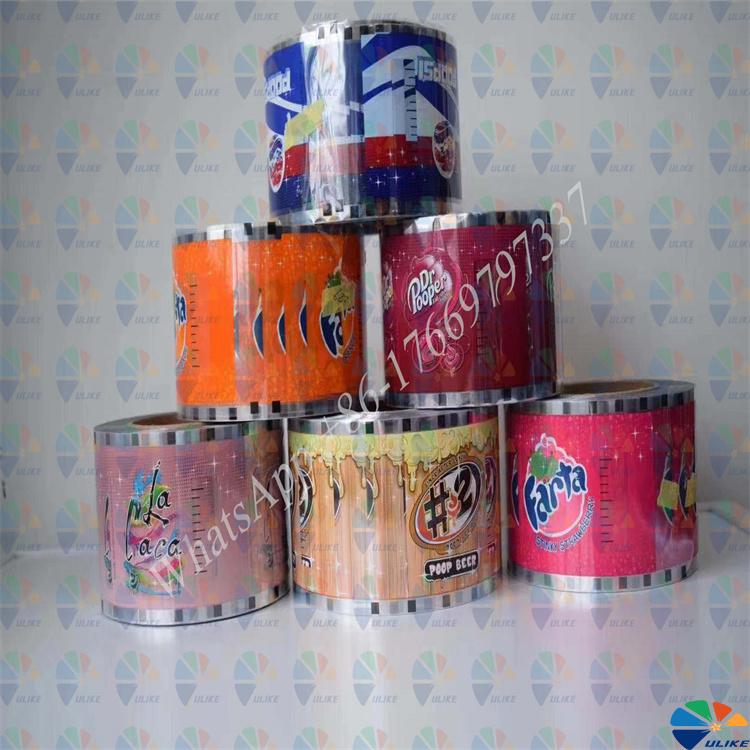9 Common Printing Terms in Thermal Transfer Industry
9 Common Printing Terms in
Thermal Transfer Industry
In the thermal transfer industry, some professional terms are always used to represent the specific links and processes of this industry. The following will introduce 9 commonly used printing terms in the thermal transfer industry, hoping to help you have a general understanding of the thermal transfer process.
9 Common Printing Terms in
Thermal Transfer Industry
1. Pantone Color
In simple terms, it is the standard of ink color. So far, it has been regarded as a recognized color exchange. When thermal transfer manufacturers need a certain color, they will debug it according to the color standard.
Commonly used color standards are a color matching system. It is an authoritative international reference standard for selecting, determining, matching and controlling ink colors, and shows the corresponding printing ink formula for each color.
2. Printing Image Screening
Since the printed product is composed of dots, the printing image screening refers to the number of screen lines per inch in the horizontal or vertical direction of the printed product, that is, the number of screen lines. When the mesh count is larger, the number of dots will be more, the dots will be denser, and the layers after thermal transfer will be richer and more colorful.
3. Bleeding
When making a design draft, the designer will generally make the image larger and overflow part of the file, so that the edge will not leak white edges when cutting, and this overflow part is called bleeding.
The size of the bleed is also different, and it needs to be determined according to the properties of the substrate. For example, the bleed of the packaging design is 5mm, and the bleed of the general thermal transfer design is about 3mm. Bleeding is to prevent the thermal transfer printing film from being scrapped when cutting.
4. White exposure
It is also called white leakage in the printing industry. This situation occurs when the color of the connection is not close during printing or plate making, revealing the white background. This is a manifestation of poor printing quality of the thermal transfer process.
5. Film
It is also called a printing plate. According to the customer's design draft, its pattern is engraved on the rubber roller, so as to transfer the pattern and quickly complete the transfer of the thermal transfer printing film.
6. Proofing
Generally refers to the process of making printing samples. If the customer confirms the design online, the resolution of the computer monitor is RGB three-color mode, while the CMYK four-color mode is used when making the plate. There will be certain differences between the two in the conversion process, so it is necessary to first proof to the customer to confirm the color and pattern.
7. Four-color printing
Abbreviated as CMYK (cyan, magenta, yellow, black), it mainly uses these four colors to make subtractive color combinations to mix the color of the pattern, so that the color consistent with the design draft is mixed.
8. Special color printing
It does not use the four-color subtractive method for printing, but specifically uses two (or more) inks to adjust the thermal transfer color.
9. Gravure printing
It is a commonly used printing technology. Its biggest feature is that the image position of the printing plate is higher than the non-image part. The printed product not only has a thick ink layer and bright colors, but also has a fast printing speed and can be produced in large quantities.
![af]() Afrikaans
Afrikaans![sq]() Albanian
Albanian![am]() Amharic
Amharic![ar]() Arabic
Arabic![fr]() French
French![es]() Spanish
Spanish![ru]() Russian
Russian![de]() German
German![hy]() Armenian
Armenian![it]() Italian
Italian![ja]() Japanese
Japanese![ko]() Korean
Korean![pt]() Portuguese
Portuguese![hi]() Hindi
Hindi![az]() Azerbaijani
Azerbaijani![ro]() Romanian
Romanian![pl]() Polish
Polish![th]() Thai
Thai![el]() Greek
Greek![eu]() Basque
Basque![en]() English
English![zh-CN]() Chinese (Simplified)
Chinese (Simplified)![zh-TW]() Chinese (Traditional)
Chinese (Traditional)![be]() Belarusian
Belarusian![bn]() Bengali
Bengali![bs]() Bosnian
Bosnian![bg]() Bulgarian
Bulgarian![ca]() Catalan
Catalan![ceb]() Cebuano
Cebuano![ny]() Chichewa
Chichewa![co]() Corsican
Corsican![hr]() Croatian
Croatian![cs]() Czech
Czech![da]() Danish
Danish![nl]() Dutch
Dutch![eo]() Esperanto
Esperanto![et]() Estonian
Estonian![tl]() Filipino
Filipino![fi]() Finnish
Finnish![fy]() Frisian
Frisian![gl]() Galician
Galician![ka]() Georgian
Georgian![gu]() Gujarati
Gujarati![ht]() Haitian Creole
Haitian Creole![ha]() Hausa
Hausa![haw]() Hawaiian
Hawaiian![iw]() Hebrew
Hebrew![hmn]() Hmong
Hmong![hu]() Hungarian
Hungarian![is]() Icelandic
Icelandic![ig]() Igbo
Igbo![id]() Indonesian
Indonesian![ga]() Irish
Irish![jw]() Javanese
Javanese![kn]() Kannada
Kannada![kk]() Kazakh
Kazakh![km]() Khmer
Khmer![ku]() Kurdish (Kurmanji)
Kurdish (Kurmanji)![ky]() Kyrgyz
Kyrgyz![lo]() Lao
Lao![la]() Latin
Latin![lv]() Latvian
Latvian![lt]() Lithuanian
Lithuanian![lb]() Luxembourgish
Luxembourgish![mk]() Macedonian
Macedonian![mg]() Malagasy
Malagasy![ms]() Malay
Malay![ml]() Malayalam
Malayalam![mt]() Maltese
Maltese![mi]() Maori
Maori![mr]() Marathi
Marathi![mn]() Mongolian
Mongolian![my]() Myanmar (Burmese)
Myanmar (Burmese)![ne]() Nepali
Nepali![no]() Norwegian
Norwegian![ps]() Pashto
Pashto![fa]() Persian
Persian![pa]() Punjabi
Punjabi![sm]() Samoan
Samoan![gd]() Scottish Gaelic
Scottish Gaelic![sr]() Serbian
Serbian![st]() Sesotho
Sesotho![sn]() Shona
Shona![sd]() Sindhi
Sindhi![si]() Sinhala
Sinhala![sk]() Slovak
Slovak![sl]() Slovenian
Slovenian![so]() Somali
Somali![su]() Sudanese
Sudanese![sw]() Swahili
Swahili![sv]() Swedish
Swedish![tg]() Tajik
Tajik![ta]() Tamil
Tamil![te]() Telugu
Telugu![tr]() Turkish
Turkish![uk]() Ukrainian
Ukrainian![ur]() Urdu
Urdu![uz]() Uzbek
Uzbek![vi]() Vietnamese
Vietnamese![cy]() Welsh
Welsh![xh]() Xhosa
Xhosa![yi]() Yiddish
Yiddish![yo]() Yoruba
Yoruba![zu]() Zulu
Zulu


